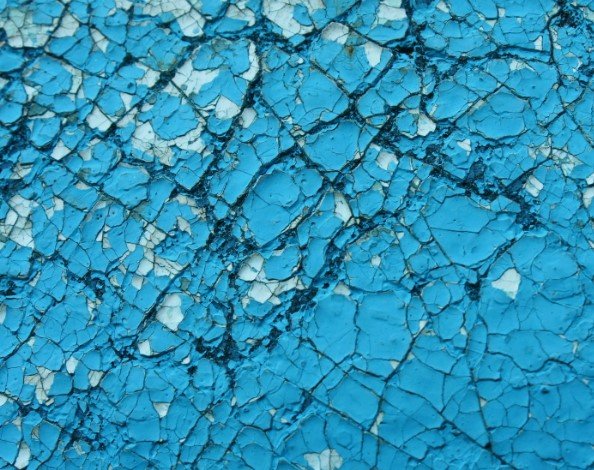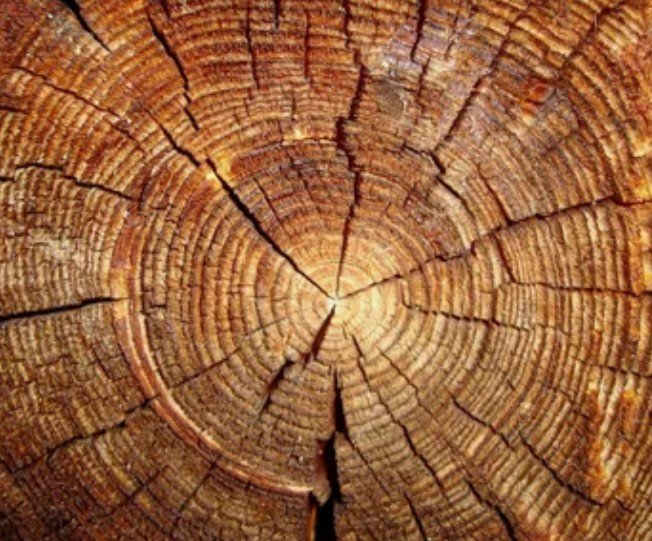Free textures for Photoshop are available for download from various graphic design websites. Ensure you check the license for personal or commercial use before downloading.
Textures can significantly enhance the visual appeal of your graphics and photos in Photoshop. Designers and photographers often search for high-quality textures that can be seamlessly integrated into their projects. These textures range from grunge, wood, paper to fabric, and more, each adding a unique touch to the design.
With the right texture, you can add depth, interest, or a vintage feel to your work. Websites like Adobe Stock, Texture King, and Brusheezy offer a diverse selection of free textures, catering to the needs of creative professionals. Remember to attribute the source when required and respect the creator’s terms of use. Downloading these free resources is a straightforward process, giving you immediate access to a vast library of textures to elevate your Photoshop creations.
Table of Contents

Textures For Photoshop Free Download For Pc
Photoshop textures can make your designs pop. They add depth and realism to your work. These free textures are perfect for any project. You can easily download them to your PC.
Wood Textures
Wood textures bring natural beauty to digital art. They mimic the look of real wood. Graphic designers love using these for backgrounds. Here are some wood textures you can find:
- Dark Oak: Rich and luxurious, perfect for elegant designs.
- Pine Wood: Light and versatile, great for a fresh look.
- Weathered Wood: Gives a vintage or rustic feel to your graphics.
Metal Textures
Metal textures are all about shine and toughness. They have a modern and industrial feel. Use them to make your designs stand out. Here are the types of metal textures:
- Brushed Steel: Subtle lines create a soft metallic sheen.
- Rusted Iron: is perfect for grunge-style artwork.
- Gold Foil: Adds a touch of luxury and class.
Paper Textures
Paper textures can make a design feel handmade. They are simple but powerful. They add depth without being overpowering. You can use these textures:
- Old Paper: gives a vintage look to your projects.
- Cardstock: Provides a clean and crisp background.
- Creased Paper: Adds a sense of movement and texture.
Fabric Textures
Fabric textures add warmth and comfort to designs. They look like real clothes. They are great for fashion or home decor themes. Some popular fabric textures include:
- Denim: Casual and cool, perfect for laid-back designs.
- Silk: Smooth and elegant for more sophisticated projects.
- Knit: Gives a cozy and homely feel to your artwork.
Textures Photoshop Textures Pack
Textures elevate the visual appeal of digital artwork and designs. They can add depth, emotion, and a tactile feel to Photoshop projects. Finding high-quality textures for Photoshop that are free to download is a goldmine for designers. The right texture pack can transform a flat design into a stunning piece of art. In this piece, we’ll explore some of the best resources for free Photoshop textures.
Online Texture Libraries
Many websites offer extensive libraries of textures that artists and designers can use. These textures come in various styles and resolutions. Below are points to consider:
- Quality and variety are essential when choosing textures.
- Look for high-resolution textures to ensure your designs look great.
- Some sites require you to create an account to download textures.
Here is a table of popular online texture libraries:
| Website | Types of Textures | Resolution |
|---|---|---|
| TextureKing | Natural, Urban | High |
| Textures.com | Various | Medium to High |
| CGTextures | 3D, Realistic | High |
Creative Commons Websites
Creative Commons websites are a boon for designers. They offer textures that you can use for free. Here’s what to keep in mind:
- Check the license before using textures in your projects.
- Some textures may require you to give credit to the creator.
- Others may be free for commercial use with no attribution needed.
Examples of Creative Commons websites include:
- Flickr
- Wikimedia Commons
- Public Domain Pictures
Social Media Platforms
Social media can be an unexpected source for textures. Here are a few tips:
- Follow artists and designers who share their creations.
- Use hashtags like #PhotoshopTextures or #FreeTextures to find posts.
- Remember to respect the creator’s rights and requests.
Popular platforms for finding textures include:
- DeviantArt
How To Use Textures In Photoshop
Photoshop textures can elevate your images with a unique and artistic touch. Understanding how to incorporate these textures is essential for any digital artist or photographer. This guide will walk you through the process of adding textures, manipulating blending modes, and adjusting opacity to enhance your photos with ease.
Adding Textures To Photos
Textures can bring depth and character to your photos. First, choose a texture that complements your image. Free textures are abundant online, with various options like grunge, paper, fabric, or nature-inspired patterns. After downloading your chosen texture, open your base photo in Photoshop. Drag the texture file into the same workspace. It will appear as a new layer. Resize the texture to fit your photo using the ‘Free Transform’ tool. Ensure the texture layer is selected. Now, follow these steps:
- Place the texture over your photo.
- Resize to cover the entire image.
- Adjust the positioning as needed.
Blending Modes For Textures
Blending modes determine how a texture interacts with the photo beneath it. In Photoshop, the texture layer’s blending mode can be changed in the ‘Layers’ panel. Common blending modes include ‘Multiply’ for a darker look, ‘Screen’ for a lighter effect, and ‘Overlay’ for a balance of both. Here’s a simple table to help you choose:
| Blending Mode | Effect |
|---|---|
| Multiply | Darkens the image |
| Screen | Lightens the image |
| Overlay | Mix of light and dark |
Experiment with different modes to see the effects. Each mode can create a unique look.
Adjusting Texture Opacity
The texture’s opacity affects its visibility. To tweak this, locate the ‘Opacity’ slider in the ‘Layers’ panel. A lower opacity will show more of the photo underneath, giving a subtle texture effect. A higher opacity will make the texture more prominent. Consider these tips:
- Start with lower opacity and increase gradually.
- Watch the photo as you adjust to find the sweet spot.
- Remember, subtlety often works best.
By fine-tuning opacity, you can achieve the perfect balance for your image.
Tips For Enhancing Textures
Enhancing textures in Photoshop can transform your designs. Free textures can add depth and realism to your work. Learning how to enhance these textures is key to creating standout visuals. Let’s dive into some techniques that can elevate your texture game.
Color Adjustments
Color can make or break a texture’s impact. Adjusting color breathes life into your designs. Start by opening the Color Balance or Hue/Saturation settings. Here, you can tweak colors to match your project’s mood. Don’t forget to play with brightness and contrast for more pop. It’s also smart to use Adjustment Layers. This way, you can change colors without harming the original texture.
- Open Color Balance for color tweaking.
- Alter the hue or saturation to shift colors.
- Adjust brightness and contrast for depth.
- Use Adjustment Layers to protect your texture.
Layer Masking Techniques
Layer masks give you control over texture placement. They let you hide or show parts of a texture. Think of a mask as a non-destructive eraser. You can create smooth transitions between textures with a soft brush. Remember to select the mask thumbnail before painting. You can also use gradients on your masks for a faded effect.
- Create a mask for non-destructive editing.
- Use a soft brush to blend textures.
- Click the mask thumbnail before painting.
- Apply gradients for soft transitions.
Texture Overlay Effects
Overlaying textures can add dimension to your images. Place your texture above your image in Photoshop. Change the blending mode for different effects. Multiply darkens, while Screen lightens your image. You can also lower the opacity for a subtle touch. Experiment with various blending modes to see what works best.
- Put your texture above your image.
- Change the blending mode for new effects.
- Multiply darkens the image.
- Screen mode can lighten it.
- Adjust opacity for subtlety.

Legal Considerations: Paper Textures For Photoshop
Finding the right textures for Photoshop can be exciting. Yet, it’s important to know the rules. This means understanding what is legal and what is not. It’s about making sure artists get credit for their work. Let’s dive into how to use textures the right way.
Understanding Copyright Issues
Copyright laws protect artists’ work. This means you can’t use their textures without permission. Imagine drawing a picture that everyone loves. You’d want people to ask before they use it, right? That’s how artists feel about their textures. Here are some key points:
- Always check if you’re allowed to use a texture.
- Some textures are free to use, but not all.
- Using someone’s texture without permission is like taking something that isn’t yours.
Think of the internet as a big library. Just because a book is there, doesn’t mean you can take it home without checking it out. The same goes for textures.
Usage Rights For Free Textures
Even if textures are free, there are rules. These rules tell you how you can use them. Imagine you got a free toy, but the box said, “Only play with it inside.” It’s similar with textures. Here’s a simple guide:
| Type of Use | What It Means |
|---|---|
| Personal Use | You can use it for fun projects at home. |
| Commercial Use | You can use it in projects that make money. |
| Attribution | You need to say who made the texture. |
Always read the rules before you download a texture. This keeps you and the artist happy. Think of it like playing a game. Knowing the rules makes the game more fun for everyone.
Creating Custom Textures
Textures for Photoshop are great for making unique designs. They add depth and interest to your work. This post will talk about how to make your textures. You will learn about taking pictures of textures and using digital tools.
Photographing Textures
Taking your texture photos is both fun and rewarding. Here’s what you need to know:
- Choose the right subject: Anything with a unique pattern works well. Think about wood, fabric, or leaves.
- Good lighting is key: Natural light works best. Try it early in the morning or late in the afternoon for the best effect.
- Focus on details: Get close to your subject. Make sure your camera captures every detail.
- Edit your photos: Use software to enhance the texture. Adjust the contrast or color to make it pop.
Remember, the goal is to capture something that will make your designs stand out. So, always keep an eye out for interesting patterns!
Digital Texture Creation Tools
Many tools can help you create textures from scratch. Here are some top picks:
| Tool Name | Features | Price |
|---|---|---|
| Adobe Photoshop | Powerful editing, 3D texture creation | Subscription |
| GIMP | Free, open-source, and good for beginners | Free |
| Substance Designer | Complex textures, 3D materials | Subscription |
Using these tools, you can start from a blank canvas. You can mix colors, shapes, and effects to make something new. With practice, you’ll be able to create textures that are all your own.
Conclusion
Wrapping up, and finding the perfect textures for your Photoshop projects has never been easier. Our list of free downloads is a treasure trove for creatives. Elevate your designs without spending a dime. Start exploring now and let your creativity soar with these stunning, free textures.
Happy designing!



